The Sun, the Moon, and the Ascendant are the three most important points in the natal chart, defining the person’s individuality and the forms in which it manifests. These rarely coincide in the same sign, although such cases do occur (and these situations most closely align with the classic descriptions of a given sign). Generally, for men, the Sun forms the “core” of the personality—the set of its constant traits—while the Moon determines the manner in which these traits are expressed: adaptability to the environment, tendencies, and patterns of development. For women, the roles of these two luminaries are often reversed.
To calculate the Ascendant, use our online natal chart calculator.
The Ascendant indicates the degree to which a person is able to realize their innate potential. One could say that the solar-lunar horoscope represents the “genotype” of the personality, a set of characteristics given at birth—the product of a specific geomagnetic situation (the left hand in palmistry). The Ascendant, on the other hand, can be called the astrological “phenotype,” a set of traits acquired more or less consciously throughout life (in palmistry, the right hand). This is the very expression of free will that Ptolemy spoke of, pointing out that “the stars” determine only half of a person’s fate—the rest is shaped by the individual themself. Of course, not everyone can (or wishes to) become the “architect of their own fortune”; many simply drift with the current, allowing fate to make decisions for them.
Another challenge arises from the fact that, in the West, it is customary to record the time of birth to the nearest minute, so calculating the Ascendant is rarely problematic. In Eastern countries (including the former Soviet Union), this is not always possible; errors in birth time can reach several hours. In such cases, one has to either rectify the Ascendant based on life events or rely on the solar-lunar horoscope, which unfortunately is more like a magazine-style horoscope for the masses.
But let’s return to the Houses, which are counted from the Ascendant. We obtain twelve Houses of varying size—their dimensions change according to geographic latitude, season, and time of day. In addition, there are four significant points, one of which is the Ascendant. Let’s take a closer look at them.
The Descendant in the Chart
Directly opposite the Ascendant lies the Descendant, the descending (or setting) degree. If, at the moment of birth, a certain degree of the celestial circle rises in the East, then in the West, at that same moment, another degree sets—this is called the Descendant, or DS. The Descendant marks the cusp of the Seventh House and is denoted by the letters DS.
The Ascendant–Descendant line represents the horizontal axis, or simply the horizon. If the Ascendant corresponds to the person’s “self,” the beginning of the personality (the cusp of the First House), then the Descendant is the point of encountering the outside world, indicating how the person relates to others, and how others relate to them. Fittingly, the Descendant opens the Seventh House, the “House of Marriage and Partnership.”
There are also two other points in the chart that mark the cusps of the Fourth and Tenth Houses: the first is called the Nadir, the second the Midheaven. The Nadir marks the start of the Fourth House and is denoted by IC (from Latin “imum coeli”—the lowest part of the sky). The Midheaven corresponds to the cusp of the Tenth House and is denoted by MC (from Latin “medium coeli,” meaning the same).
Physically, the IC corresponds to midnight, and the MC to noon: these are the points of the ecliptic the Sun crosses at approximately twelve o’clock, day or night, on a given calendar date. In the chart of a person born, say, at 11:45 local solar time, the MC is almost exactly aligned with the Sun’s position; at 12:05, it will be just slightly behind.
On an occult level, the Nadir (IC) symbolizes a person’s “initial capital”—the genetic and psychological baggage received at birth; the Midheaven (MC) represents the goal of one’s aspirations, the “zenith” to which the personality strives during the course of development. Human life unfolds, as it were, along the line connecting the Nadir and the Zenith. This line (IC–MC) is called the meridian.
The horizon line divides the chart into northern and southern halves, while the meridian divides it into western and eastern halves. Even a quick glance at a chart is often enough to see how the planets are distributed relative to these axes and to draw certain conclusions.
For greater clarity, redraw your natal chart on a blank sheet of paper, and draw two lines following the blue arrows: one from the Ascendant (AS) in the First House, and one from the Midheaven (MC) in the Tenth House. It is highly recommended that all beginning astrologers redraw their chart in this way—it helps to immerse oneself more deeply in the mystery of subtle energies and their influence.
Next, turn your chart so that the horizon is in a true horizontal position, as it should be, and observe what you see.
If most of the planets are above the horizon—in the southern half of the chart—this usually indicates that the native is a person of action: someone who prefers to take control of their own destiny. The closer the Sun is to the meridian, the higher the position the person is likely to reach. This holds true even if other factors in the chart are not particularly favorable.
If the planets are mostly below the horizon, in the northern half of the chart, fate is generally less favorable to the native: all their development takes place “internally,” within the soul, without much tangible social result. Such a person often finds it difficult to overcome circumstances. If the Sun or Jupiter is near the Nadir (IC)—the lowest point of the northern half of the sky—the native often devotes themselves to mystical teachings, metaphysics, or the occult sciences. If Mars and Saturn are near this point, it indicates tense family relationships.
If most planets are in the eastern half—that is, within the triangle MC–AS–IC—this signifies early personal development, vivid events in youth, and, in favorable circumstances, early independence and success in life. If the overall chart is not favorable, however, this may indicate many difficulties and obstacles in the first half of life.
If the planets are mainly concentrated in the western half, within the triangle IC–DS–MC, the most significant events are likely to occur in the second half of life. Such people tend to wait rather than act; they adapt to decisions imposed by their environment. For them, inner life is generally more important than outer achievements.
The horizon and meridian divide the chart into four sectors, or quadrants. These sectors are rarely equal to each other, since at different latitudes and times of year, day and night—and thus light and darkness—have varying lengths. The American astrologer Dane Rudhyar, in his book “The Astrology of Personality,” notes that the northwest sector provides insight into the person’s emotional sphere, the southeast sector into their logical thinking; the southwest describes the native’s perceptual qualities, and the northeast reveals their ways of processing information. ✓
Share with your friends. +5 to Karma
Articles from the category:

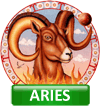
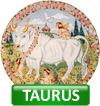
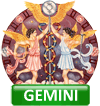
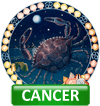

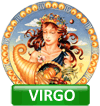
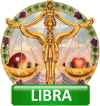

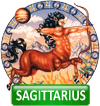
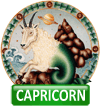
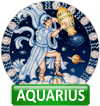
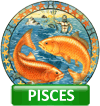








Comments: